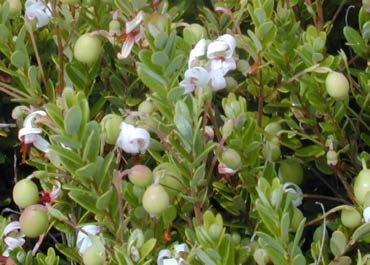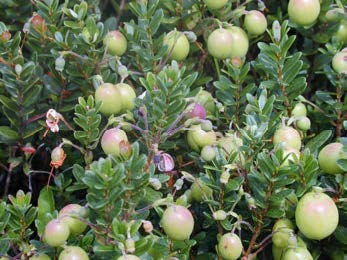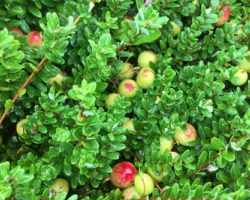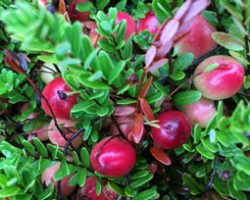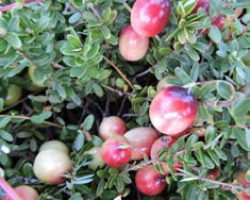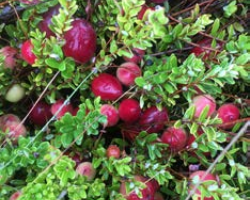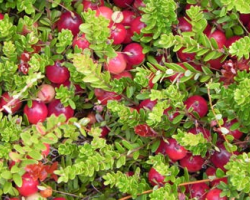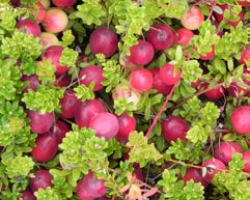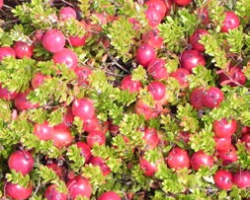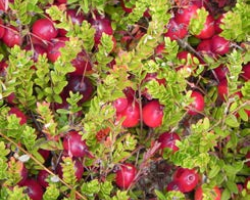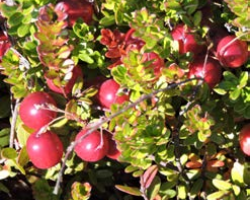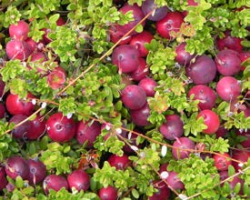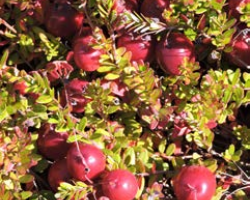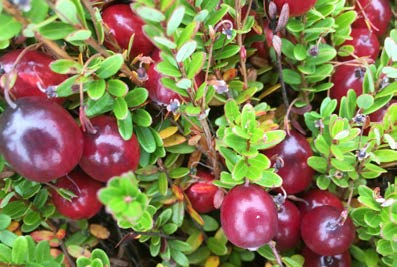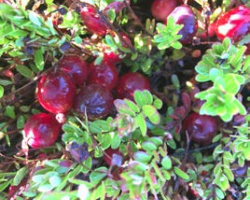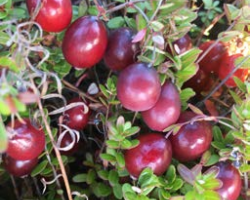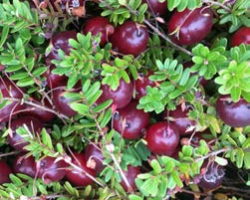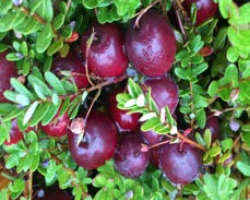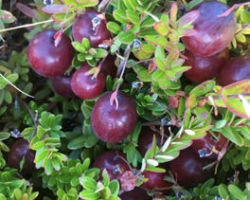Frost Tolerances of Cranberry Fruit (2019)
Frost Tolerances of Cranberry Fruit
In the late summer and into the fall, cranberry frost tolerance is estimated based on the developmental stage of the plants and the color of the fruit. These estimates are based on observations and controlled temperature experimentation. The photos in this fact sheet show the stages and fruit color associated with various degrees of cold tolerance. Observations should be made by looking into the vine canopy; do not separate the vines or remove the fruit or uprights.
Summer – 30°F tolerance
White to light blush fruit – 28°F tolerance
Note: fruit may have a yellowish appearance
Deep blush on exposed fruit surface – 27°F tolerance
Deep blush over entire fruit – 26°F tolerance
Red – 25°F tolerance
Cold hardiness of cranberry fruit. Newly formed green fruit are sensitive to temperatures below 30°F. Late in the summer, the fruit turn white and then develop a faint blush on the exposed surfaces. This transition is associated with increased hardiness; the fruit will now tolerate 28°F. As the fruit continue to color, hardiness increases and the fruit can tolerate increasingly lower temperatures (see the table below). For all varieties studied, tolerance is the same for each color through the red stage (25°F tolerance). However, as the fruit reach deep red and maroon stages, their tolerances differ by variety and maturity.
For each of the varieties, maximum cold hardiness (tolerance) was associated with full mature color (maroon in the table below) but as noted, the actual tolerance temperature differed. At full maturity, 95% survival after short (1-2 hr) exposures to temperature as low as 18°F has been observed in Early Black, Howes, and Stevens, BUT not consistently from year to year. Ben Lear never survived temperatures below 24°F. In some years, over-ripe fruit (2 weeks after maximum color) showed loss of tolerance, with all varieties damaged by 22°F or lower. The tolerances listed in the table below and in the photo captions reflect a conservative representation of the available research data.
The fruit tolerance table is based on color development, which is used as a visual guide to ripening, a chemical and physiological process. It is not the color that confers increased tolerance to freezing, but rather the internal chemical and physiological changes in the berries that accompany the increase in color. As noted on page 1, color should be assessed in the field by looking down at the vines, since the lowest fruit buried in the canopy often remain white late into the season. Those berries are likely somewhat protected by the vine canopy and the internal chemical/physiological changes that occur even in the absence of color development.
| Maturity Level | Early Black | Howes | Stevens | Ben Lear and New Hybrids |
| Green | 30°F | 30°F | 30°F | 30°F |
| White to light blush | 28°F | 28°F | 28°F | 28°F |
| Deep blush exposed surface | 27°F | 27°F | 27°F | 27°F |
| Deep Blush | 26°F | 26°F | 26°F | 26°F |
| Red | 25°F | 25°F | 25°F | 25°F |
| Dark Red | 24°F | 24°F | ||
| Deep Red | 23°F | 23°F | 23°F | 23°F |
| Maroon (1-2 wk. later) | 23°F | 23-20°F | 22°F | 24°F |
| Late Season (end Oct.) | 23°F | 23°F | 23°F | 24°F |
*Note that each variety will reach a given stage on a different date. Generally, Early Black, Ben Lear, and many of the newest hybrids will color early and Howes, Stevens, and some new hybrids will color later.
**loss of tolerance when over-ripe
Dark Red – 24°F tolerance
Early Black and Howes only
Deep Red – Tolerance varies by variety
Maroon – Tolerance varies by variety
1-2 weeks after Deep Red
May 2019. UMass Amherst Cranberry Station.
E. Wareham, MA 02538 http://ag.umass.edu/cranberry
Author/Photography: Carolyn DeMoranville Additional photography: Krystal DeMoranville
This material is based upon work supported by the National Institute of Food and Agriculture, U.S. Department of Agriculture, the Massachusetts Agricultural Experiment Station and the UMass Cranberry Station under Project No. MAS00999. Additional funding provided by the Cape Cod Cranberry Growers Association. The University of Massachusetts is an Affirmative Action/Equal Opportunity Institution.
